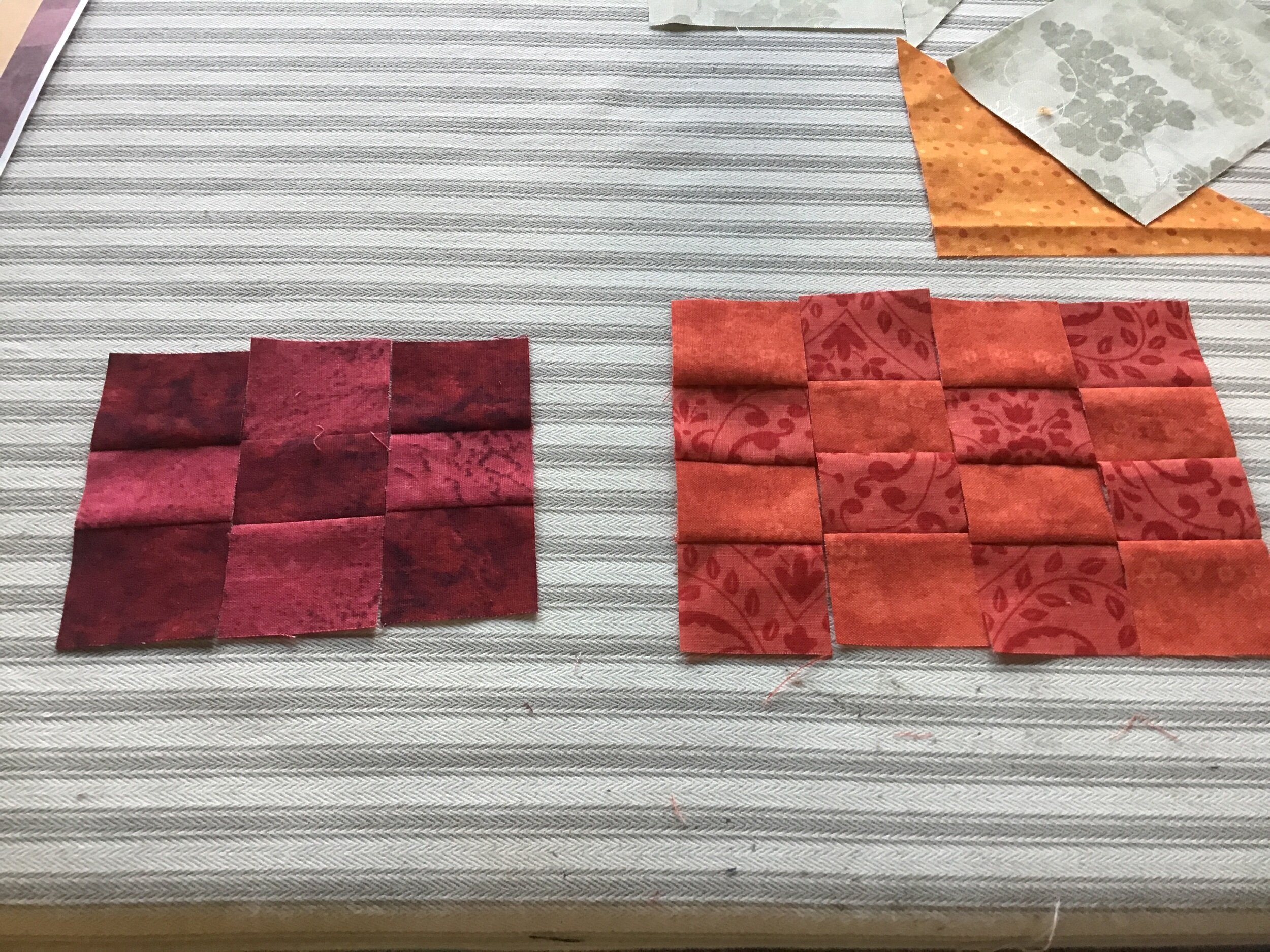Back to School bloghop - Pythagoras Theorem
Welcome to the August blog hop hosted by Quilt Mania. Every month you will get a fabulous 12 inch block to download. the theme for August is ‘back to school’: a theme which many parents may love…. although teachers …. have very mixed feelings.
My pattern is a demonstration of Pythagoras Theorem. Now this is one idea from maths that everyone remembers a bit about. It’s the first time students have studied a theorem, and it’s made even cooler by having a really long Greek name.
Now, there will be a quiz at the end of this blog (just kidding), but either you are thinking ‘yes of course’ or you are thinking ‘whatever! this woman is crazy. Who needs it?’ Bear with me. It does have a bit of quilters’ cool as well as maths cred.
Firstly, what is it? It is a formula that shows the relationship between the sides of a right angled triangle. The two shorter sides are beside the right angle, and the longest side, known as the hypotenuse, is always opposite the right angle.
Pythagoras was a Greek philosopher and mathematician. He was born around 570 BC on Samos. The Greeks of the time thought that if they could understand maths they would have nailed the meaning of life. The Pythagoreans had a secret society where (I believe) you could get in by drawing a perfect pentagon - a tricky geometry problem if you only have a ruler (with no markings) and a compass. Pythagoras was probably not the creator of his famous theorem though, it had been knocking around for years. But what a way to be remembered!
image of Pythagoras from coolCLIPS.com
The interesting property is that if you add up the squares of the short sides, you will get the square of the long side. This is the property that this block is displaying. So the orange triangle has a right angle. The squares on the sides of the triangle are made up of smaller squares. The red square has 9 patches. The orange square has 16 patches. The green square has 25 patches.
Now if you check, 9 +16 = 25
The sides of the triangle are 3 inches long, 4 inches long, and 5 inches long. so we have just demonstrated that 3x3 + 4x4 = 5x5, or 3 squared + 4 squared = 5 squared.
This is really handy for quilters because it means you can always work out the length of a diagonal from the sides of a right angled triangle. So if my triangle is half a square of sides 5”, my diagonal will be the square root of 25+25 which is the square root of 50, so a smidge over 7 inches.
It also means that if you have a piece of string with a knot at 3 feet, another knot 4 feet later and another knot at the end of the string 5 feet later, you can fold your string into a triangle and you will have a right angle. Apparently, this is how the Egyptians made great right angles at the corners of the pyramids.
This right angle method is used to this day. My daughter was doing underwater archaeology in Spain and they needed to make quadrants on the seabed. Guess what! Good old Pythagoras to the rescue. All you need is a handy piece of string and you can peg out some great right angles.
underwater archaeology
My block is heaps easier than it looks because geometry just works. you need to make a 9 patch, a 16 patch and a 25 patch Each little square is 1 inch finished. Then for the background you need 3 identical rectangles and 3 identical triangles, and of course the centre triangle which is also the same size.
Full instructions are in the pattern which you can download from my Patterns for Sale and will be free for August 2020
I hope you have a lot of fun with the ‘back to school’ blocks and make up some fabulous quilts. Here is the link to my block pattern and the links to the other blogs. Please sign up to my newsletter and leave me a comment! I love feedback. Enjoy all the other blogs and blocks!










